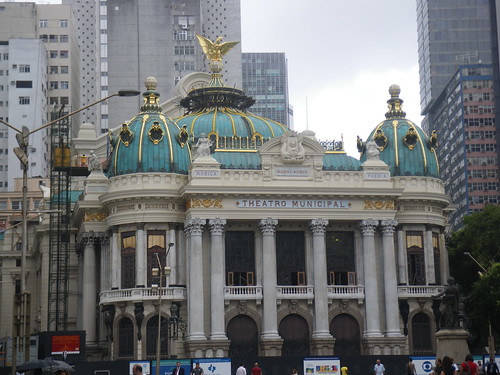Traveling to Rio de Janeiro from the Pantanal was a bit like hopping out of Never, Neverland and back into reality. Rio is a vibrant, lively big city, known for it’s beach culture and carnival. The Pantanal is known for it’s birds, quiet and swamp like atmosphere. Traveling between the two was like traveling from one end of the spectrum to the other.
One night in Rio, and we were enraptured. It was as though we returned to Never, Neverland, just this time in a city built in paradise.
We showed up with now plans but quickly found a Rio de Janeiro hotel and immediately started to fall in love with all things Rio. At the corner of our street a juice bar seemingly ran all night, squeezing fresh orange and citrus juices from an industrial sized blender, with bags of fruit swinging from the ceiling rafters. The music played loudly and the crowd kept coming. The people were as diverse as the juices the shop blended. Of all ethnic groups, backgrounds and cultures they converged on this tiny juice stall. The men gathered at the counter, the couples at sidewalk tables. It was as though no other place in the neighborhood existed. And yet every 10 feet there was another place just like it – a gathering place for a seemingly endless neighborhood of friends.
From our base in Catete we explored Rio on foot, by bus and by metro. We walked the famous beaches, wearing more clothing than seemed appropriate, and covered more distance in just a few days than we ever thought possible. Ipanema, Copacabana, Leblon, it seemed hardly real to be at an exotic beach one moment and in a busy, thriving metropolis in the next. We skipped the climb to Christ the Redeemer and Sugarloaf, opting instead to explore the picturesque architecture of Santa Teresa. What was old was also new in Rio de Janiero and the colonial architecture mixed with skyscrapers, creating a landscape that was the antithesis of planned, and at the same time, fit together like an old puzzle.
We met, dined and enjoyed the evening with local students. Unwilling to break the spell that Rio and it’s residents held over us, we talked politics, life and philosophy (as you do when you’re enthralled with a place!) until the wee hours of the morning.
And when we returned, the juice bar was still open.
IF YOU GO: Although Rio de Janeiro is full of interesting neighborhoods with their own character, and a hotel in Rio de Janeiro always seems to be well located- between the bus, metro, taxis and on foot, nothing is a long distance away. It is easy to fall in love with Rio and fall under it’s spell. Take the time to explore beyond the beach and the Sambadome, there is so much more to the city than Carnival and tiny bikinis!









Recent Comments